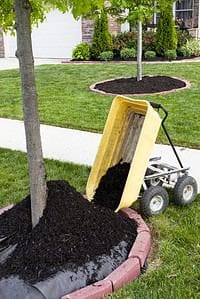
7 Mulching Tips for the Winter
Winter can be a challenging time for any gardener trying to preserve a beautiful green landscape. Plants need to stay warm, and mulching is a key practice to make that happen. Here are 7 tips to master the art of winter mulching and fortify your garden against the cold.
Know When to Apply Mulch
Timing is everything when it comes to winter mulching. For instance, you’ll want to apply mulch after the first hard frost when the ground has started to freeze. This helps to lock in soil moisture and insulate plant roots before the coldest temperatures arrive.
Choose the Best Mulch for Your Garden

Opt for a suitable mulching material that provides effective insulation. Straw, shredded leaves, pine straw, and wood chips are excellent choices. Avoid using materials that compact easily, as they may hinder proper air circulation around the plants.
Avoid Smothering the Plants
When applying mulch, avoid piling it directly against the stems or trunks of plants, as this can smother the plants. Instead, create a mulch ring around the base, leaving a small gap to prevent moisture accumulation and potential rot. Proper mulch distribution ensures plants receive adequate airflow.
Mulch Thickness Matters
Aim for a mulch layer of 2 to 4 inches. This thickness provides ample insulation without suffocating the soil. Too thin, and it may not provide sufficient protection; too thick, and it can create a breeding ground for pests.
Extend the mulch layer beyond the drip line of trees and shrubs. This ensures that the entire root zone receives protection. For perennials, cover the entire root area, providing a cozy blanket for winter.
Add Evergreen Boughs for Added Protection

For additional insulation, consider placing evergreen boughs over delicate plants. The boughs act as a protective barrier against cold winds and provide extra warmth to the plants beneath.
Be Mindful of Bulbs
If your garden has flower beds with bulbs, be mindful of their emergence in spring. You can still mulch, but use a lighter layer of mulch or leave areas uncovered to allow shoots to push through the soil easily.
Plan for Spring Cleanup
As winter fades, plan for a timely spring cleanup. Remove excess mulch to prevent it from becoming a haven for pests and diseases. This allows the soil to warm up faster and encourages healthy growth.






Leave a Reply